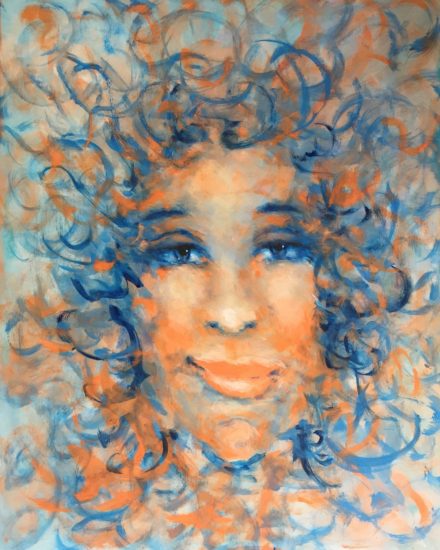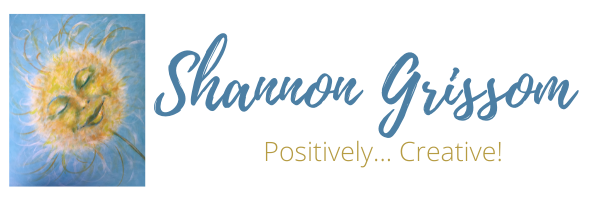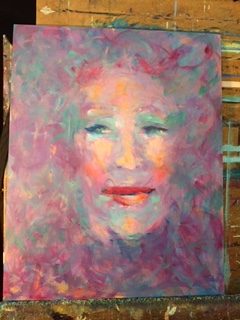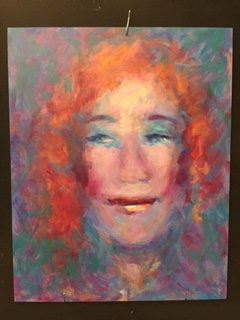I was working in acrylic and I had a ton of leftover paint. I didn’t want it to go to waste, so I applied it to an un-primed wood panel, using a sponge brush.
Yep. a sponge brush!
I was so excited about what emerged using such a crude instrument, that I decided to challenge myself to complete the painting using only a sponge brush.
My first statement on Day 1 was promising, but subsequent painting sessions were not successful. All the cool color had disappeared and she no longer looked happy.
Still I persevered.
It wasn’t until I truly admitted that I had no control that she finally emerged. As you can see below, she is not at all what I was trying to create, but I am happy with where she landed. I’m calling her Valentina as she landed in a place of love.

Along the way another sponge brush painting emerged. This one was playful, goofy, and definitely off-kilter and. Thankfully I just let her be. I’m naming her Lalita. Her name means ” She who plays.”

Here’s what I learned along the way:
- A thoroughly wet sponge is great for initial drawing and blocking in the piece. After that, it’s best to use a dry or slightly damp brush. Otherwise you lift off previous layers of paint.
- The brush doesn’t hold up very long before it falls off the handle or the handle pokes through the sponge. (I used cheap sponge brushes) When that happens, try holding the brush by the sponge instead of the handle. Eventually though, it will disintegrate and you’ll need to get a new one.
- A fresh, completely dry brush is best for details such as eye highlights. Yeah, I know… I’m still trying to control things…
My other work has become more painterly as a result of this exercise. I’m really glad I gave it a shot. Lemme know if you decide to give it a try. I’d love to see what you create.



